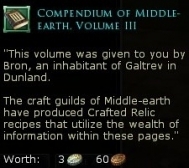
However, he had remembered that he abandoned the concept of the Children of the Valar, and that Gwaihir and Landroval were descendants of Thorondor during the events of The Lord of the Rings. In earlier texts, Tolkien once envisioned the Great Eagles as bird-shaped Maiar. However, Tolkien's use of this model does not necessarily mean that his birds were ordinary Golden Eagles. According to Christopher Tolkien, the author based this picture on a painting by Archibald Thorburn of an immature Golden Eagle, which Christopher found for him in The Birds of the British Isles by T. Tolkien's painting of an eagle on a crag appears in some editions of The Hobbit. Tolkien on flying the One Ring to Mount Doom I have used them sparingly, and that is the absolute limit of their credibility or usefulness. Īfter the War of the Ring had finished, the Eagles departed Middle-earth.Įlvish words for the Eagles were Sindarin thoron or thorn and Quenya soron. Then Gwaihir, with others of his people such as Landroval his brother and Meneldor, rescued Frodo Baggins and Samwise Gamgee from Mount Doom, nearby, when the One Ring had been destroyed. The Eagles arrived in time to overthrow some of the Nazgûl astride their fellbeasts. Īfter Mordor's defeat in the Battle of the Pelennor Fields, the Eagles aided the host of King Elessar at the Battle of the Morannon at Mordor's Black Gate, in March of 3019. In TA 3018, during the War of the Ring, Gwaihir rescued Gandalf the Grey from the top of Orthanc in Isengard-having been dispatched by Radagast-and again, in the following year, from Zirakzigil high above Moria after Gandalf's duel with the Balrog. The Lord of the Eagles thereafter became "King of All Birds". Weeks later, a number of these Eagles flew to the Lonely Mountain, joining the Battle of Five Armies that had erupted, and assisting in the defeat of goblins and Wargs. In TA 2941, the Lord of the Eagles at the time with a company of Eagles rescued Gandalf the Grey, Bilbo Baggins, and Thorin Oakenshield and thirteen fellow dwarves from Goblin-town, bringing them to the eyrie for a night and a day. These Eagles helped the Elves of Rivendell and Radagast in watching the land and gathering any news of Orcs. In the Third Age, some of Thorondor's descendants lived in an eyrie to the east of the Misty Mountains in Wilderland. Towards the end of Númenor, the Valar sent storm clouds in the shape of Great Eagles in an attempt to warn the Númenóreans of their folly and impending punishment. The Eagles also watched the peak of Mount Meneltarma, and three Eagles would always appear when someone climbed to the summit and during the festivals of Erukyermë, Eruhantalë, and Erulaitalë. In the Second Age, a pair of Eagles had an eyrie in the King's House in Armenelos, the capital of Númenor, until the reign of Tar-Ancalimon when the Kings became hostile to the Valar. "The Eagles of Manwë", by Ted Nasmith, depicting the warning to the Númenóreans Second Age The Great Eagles fought alongside the army of the Valar, Elves and Edain during the War of Wrath at the end of the First Age, intervening decisively with Eärendil in the battle against Ancalagon. Thorondor wounded Morgoth in the face immediately after Morgoth's duel with Fingolfin in the Dagor Bragollach, and carried Fingolfin's corpse to the Echoriath, where Turgon would bury him.

There they were friends of King Turgon, and kept any spies away from the mountains.

Thorondor's folk later removed their eyries to the Crissaegrim, part of the Echoriath encircling the secret location of Gondolin. While they lived there, Thorondor helped Fingon rescue Maedhros from one of the sides of Thangorodrim. Morgoth first discovered the limits of their sight prior to the fall of the great stronghold of Utumno.įor a time, the King of the Eagles, Thorondor, kept his eyries at the top of Thangorodrim, the three mighty peaks that Morgoth raised from the Iron Mountains above the gates of Angband.

The Great Eagles were the messengers and spies of Manwë, and possessed the ability to see through all physical matter, except for the blackness of Morgoth's evil pits. An Eagle attacking a dragon of Angband in the War of Wrath, by Kip Rasmussen First Age


 0 kommentar(er)
0 kommentar(er)
